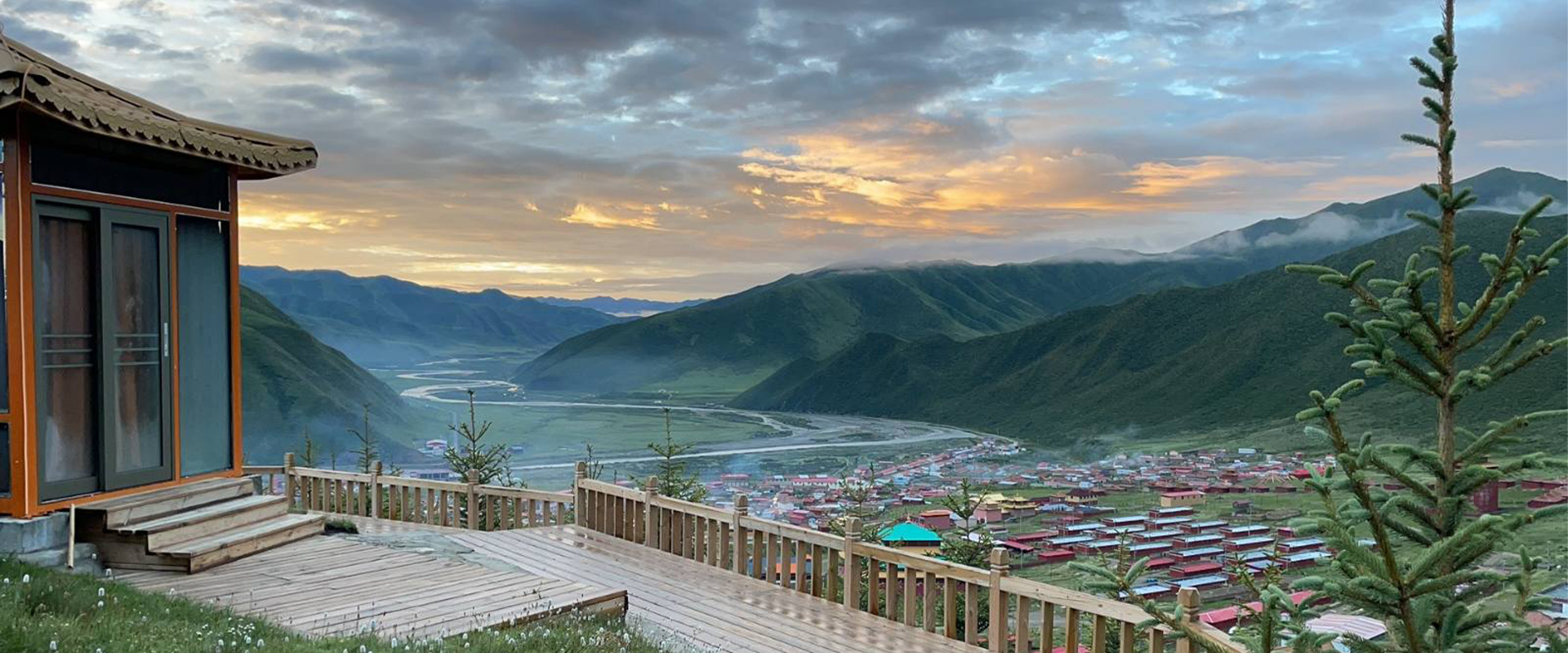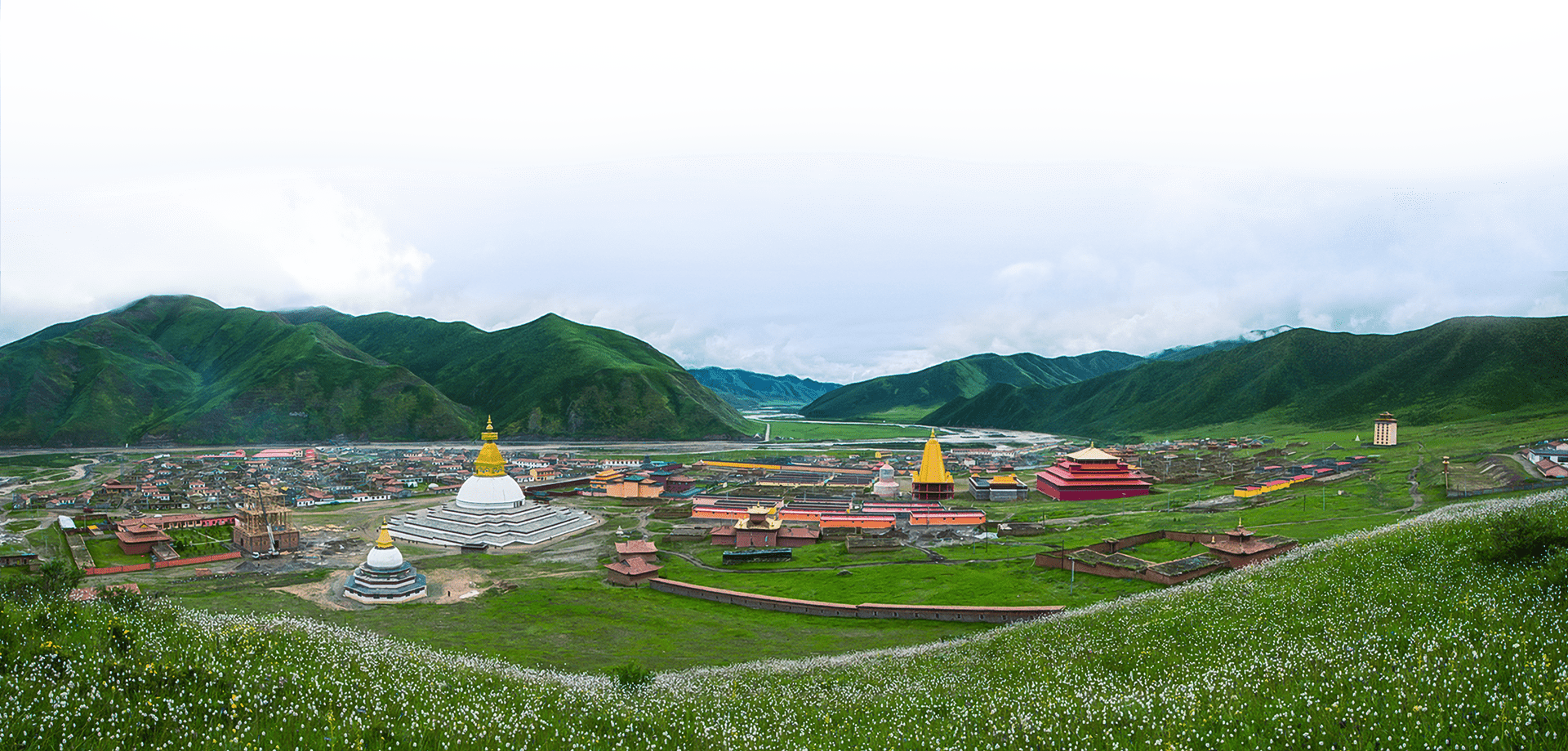Garab Dorje
PRAHEVAJRA (GARAB DORJE)
PRAHEVAJRA (dGa’ Rab rDo rJe) is a Nirmāṇakāya, manifested body of the Buddha appearing as the first human master of Dzogpa Chenpo. According to Dzogpa Chenpo sources, Prahevajra was born to a daughter of the king of Oḍḍiyāṇa, which was located, according to some scholars, somewhere around the Swat Valley in present-day Pakistan. Oḍḍiyāṇa was the most important source of esoteric Buddhist teachings, or tantras. It was a place of power and a land of ḍākinīs, rich in natural treasures, forests, and wild animals. In Oḍḍiyāṇa there was also a magnificent temple cal ed Deche Tsekpa (Heap of Joy) surrounded by 6,108 small temples. All were endowed with great prosperity.
Not far off, on an island covered by golden sand, a nun named Su- dharmā, the daughter of King Uparāja and Queen Ālokabhāsvati (One with Lights) of Oḍḍiyāṇa was in absorption in a simple grass hut with an attendant named Sukhasāravati (Joyous Heart). One night, the nun had a dream in which an immaculate man with a white complexion came and placed three times on her head a crystal vase adorned with five syllables symbolizing the five Buddhas. The vase emanated beams of light, and she was able to see the three worlds clearly.
In the tenth month after the dream, a son adorned with many auspicious signs was born to the nun. This child was the rebirth of Adhichitta, a manifestation of Vajrasattva who appeared in the god’s realm to propagate Dzogpa Chenpo there. The nun was frightened and ashamed. “This fatherless son wil be none other than an evil spirit!” she exclaimed, and she threw him into a pit of ashes, although the attendant, who was herself adorned with auspicious qualities, warned the nun that the child was an enlightened manifestation. At that moment wondrous sounds were heard and rays appeared. Three nights later the nun recovered the infant, who was unharmed. She realized that he was an enlightened manifestation, and she brought him home, wrapped him in a white silk cloth, and gave him a bath. At that moment, the ḍākinīs and sages showered praise and offerings on the infant, and from the sky the gods proclaimed:
O Protector, Teacher, Blessed One,
The lord of the world, who reveals the true nature,
Be our powerful protector.
Vajra of the Sky, we pray to you.
When the child was seven years old, bursting with the energies of wisdom, he insisted that his mother al ow him to go see the scholars so that he could debate them about religious doctrine. When he had permission, he rushed to his father, King Uparāja, and requested to meet the scholars. He debated with five hundred scholars, none of whom could defeat him. Unanimously they accepted him as an enlightened incarnation and took his feet upon their heads in the gesture of highest reverence. They gave the boy the name Prajñābhava (Wisdom Nature). The king was very happy and gave the child the name Prahevajra (Vajra of Supreme Joy). He was also cal ed Vetālasukha and Rolang Thaldok (Blissful Zombie and Ash-colored Zombie), as he had been recovered from the ashes where he had been buried.
Then in the north, on the precipice of Mount Sūryaprakāsha (Very Sunny Mountain), in a grass hut, he remained in contemplation until he reached the age of thirty-two. He received the empowerments, instructions, and entrustment of the tantras of Dzogpa Chenpo in an instant from Vajrasattva and attained the stage of “no more training,” Buddha-hood. The earth shook seven times, various sounds were heard from the sky, and a rain of flowers fell.
When those victorious sounds were heard, a heretical king sent assassins to murder Prahevajra, but they could not harm him, for his body was immaterial like the rays of the sun. Thereupon Prahevajra rose up into the sky, and the king and his subjects developed faith in him and became Buddhists.
At thirty-two, he went to Mount Malaya. He stayed at the submit of the mountain for three years and transcribed the teachings of the Buddhas of the past and especial y the 6,400,000 verses of Dzogpa Chenpo, which were present in Prahevajra’s memory, with the help of Ḍākinīs Vajradhātu and Aṇantaguṇā. Then he placed the teachings in the care of Khandro Ngönpar Jungwa and charged Ḍākinī Semden to make offerings to the sacred scriptures.
With miraculous display, Prahevajra went to the great stūpa situated in the Shītavana, the mysterious charnel ground. There he gave teachings to numerous disciples including the Ḍākinī Sūryakiraṇā. During that time, in accordance with Mañjushrī’s prophetic advice, master Mañjushrīmitra came to the Shītavana charnel ground and received the Nyingthig teachings from Prahevajra for seventy-five years.
According to Khandro Nyingthig and other sources, Shrīsiṃha also came to Shītavana charnel ground and received Khandro Nyingthig and other teachings from Prahevajra, and later he transmitted them to Guru Padamasambhava and Vairochana.
At the end, at the source of the river Danatika, the mortal body of Prahevajra dissolved into immaculate space, amid wondrous signs of earth tremors, a great mass of rainbow light, and various sounds.
When Mañjushrīmitra offered the prayers of elegy, from the midst of a mass of light in the sky, Prahevajra appeared, and a golden casket the size of a fingernail descended into Mañjushrīmitra’s hand. That casket contained the testament of Prahevajra, known as Three Words That Penetrate the Essence. It includes the following lines:
Homage to the realization of confidence in the self-awareness!
The [nature of] awareness is free from existence,
And various arisings of self-appearances are ceaseless.
So all the phenomenal existents are arising as the pure land of Dharmakāya,
And al the arisings are liberated in the nature [of awareness] itself.
[View:] Introduction to the nature [one’s own awareness] itself.
[Path:] Becoming certain of the single point [of maintaining the nature itself].
[Result:] Having confidence in the liberation [of al into the primordial nature].
Just by reading the testament, Mañjushrīmitra attained a realization equal to that of Prahevajra.
“Masters of Meditation and Miracles: Lives of the great buddhist masters of India and Tibet”, Tulku Thondup










